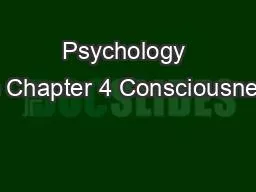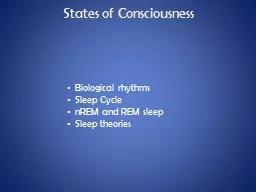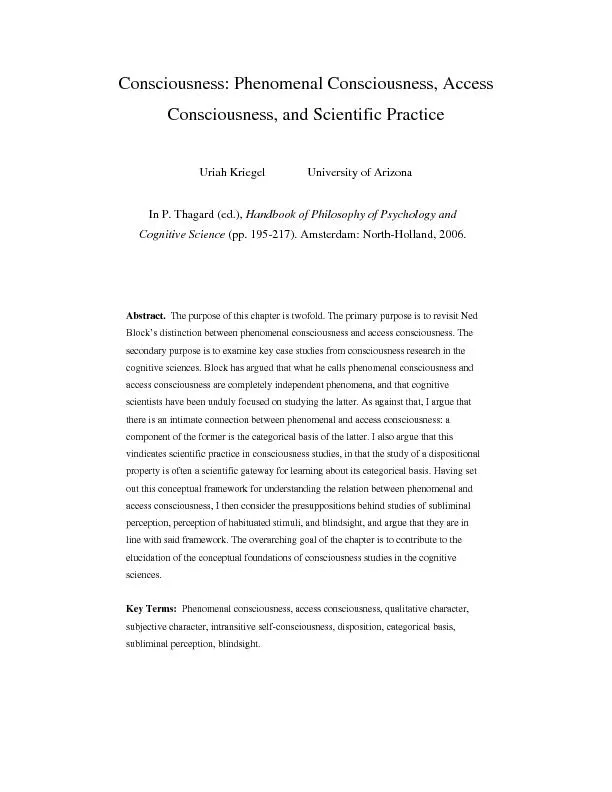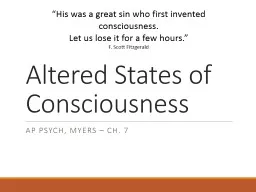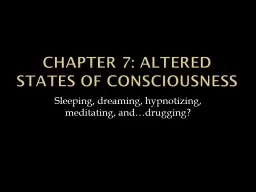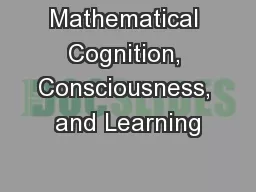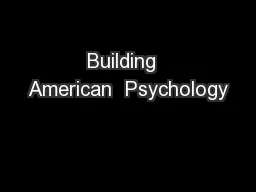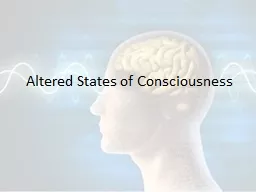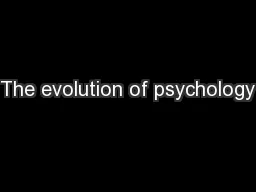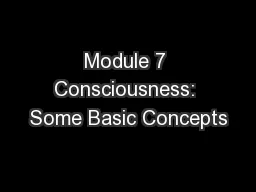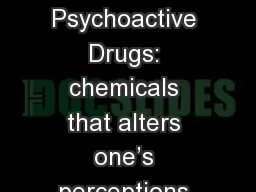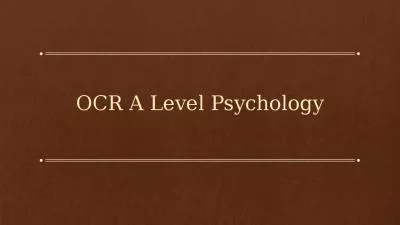PPT-Psychology 2e Chapter 4 Consciousness
Author : brown | Published Date : 2022-06-28
Module 9 Sleep and Dreams Learning Objectives 91 Describe the various stages of consciousness 92 Distinguish between explicit and implicit processing 93 Understand
Presentation Embed Code
Download Presentation
Download Presentation The PPT/PDF document "Psychology 2e Chapter 4 Consciousness" is the property of its rightful owner. Permission is granted to download and print the materials on this website for personal, non-commercial use only, and to display it on your personal computer provided you do not modify the materials and that you retain all copyright notices contained in the materials. By downloading content from our website, you accept the terms of this agreement.
Psychology 2e Chapter 4 Consciousness: Transcript
Download Rules Of Document
"Psychology 2e Chapter 4 Consciousness"The content belongs to its owner. You may download and print it for personal use, without modification, and keep all copyright notices. By downloading, you agree to these terms.
Related Documents

